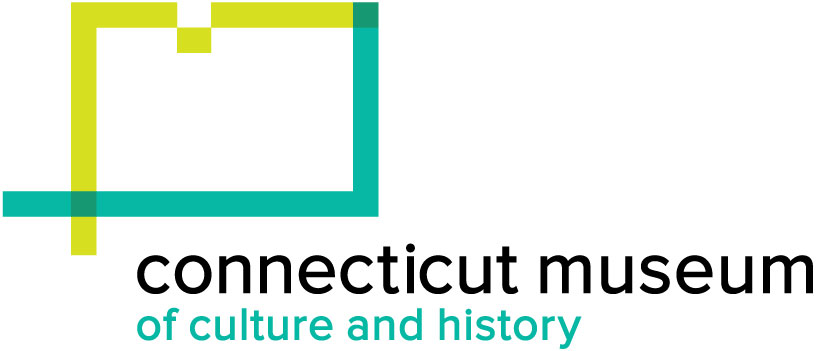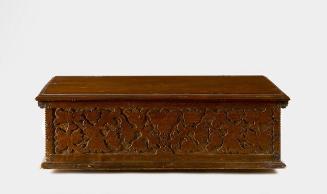Box
Furniture MakerMade by
Unknown
Date1680-1710
MediumOak, pine, iron
DimensionsPrimary Dimensions (overall height x width x depth): 8 7/8 x 28 13/16 x 18 7/8in. (22.5 x 73.2 x 47.9cm)
ClassificationsFurniture
Credit LineBequest of George Dudley Seymour
Object number1945.1.1077
DescriptionRectangular box with a carved front with the initials "RW", in the seventeenth century style. The top (replaced) has ovolo, or thumbnail, molding on the front and sides; a cleat, or strip of wood, extends from front to back on the underside of each side of the top. The top overhangs the front and sides of the box. The interior right side of the box has a lidded till. The front is carved with two rectangular, recessed panels, each with a textured background and raised wandering vines, flowers and leaves. The left panel has the raised initial "R" and the right panel has the raised initial "W", each of which is incorporated into the foliate design. Each front corner of the box has a vertical line of small gouges, or chip carving. The sides and back of the box are plain. The bottom overhangs and front and sides of the box slightly, and has a canted, or slanted, edge. A keyhole is located at the top center of the front of the box. An iron locking mechanism (replaced) is located behind the keyhole. A metal plate with a loop is located on the underside front of the top. There is one working key for the lock.
Condition: The top and cleats are replaced. The front edge of the bottom of the box is replaced; a strip of wood is added to the back edge of the bottom of the box. Each back corner of the bottom is repaired. The iron lock is a later addition. The wood above the keyhole has been replaced. The box is refinished.
Design and Construction Details:
Design. Faint, incised, vertical lines divide the front of the box into four equal sections.
Construction. The top is constructed of a pine board; the cleats are screwed to the underside of the top (top and cleats replaced). The top is joined to the box with a pair of iron cotter-pin hinges at the back edge. The front, back, and sides of the box are each constructed of a single oak board. The lid of the till rotates on wooden hinge pins. The side and bottom of the till slide into grooves on the interior front and right side of the box. The sides of the box fit into rabbets on each end of the front and back boards of the box; the sides are nailed in place through the front and back corners of the box. The bottom of the box is constructed of a single pine board that is nailed to the underside of the front, sides, and back of the box.
NotesBible Boxes: This box is of a size and shape referred to by antique collectors as a "bible box". Bible boxes were believed to hold a family's large bible. It is now known that these boxes, designed to sit on a table or chest, would have held any number of small articles belonging to the woman of the house.Condition: The top and cleats are replaced. The front edge of the bottom of the box is replaced; a strip of wood is added to the back edge of the bottom of the box. Each back corner of the bottom is repaired. The iron lock is a later addition. The wood above the keyhole has been replaced. The box is refinished.
Design and Construction Details:
Design. Faint, incised, vertical lines divide the front of the box into four equal sections.
Construction. The top is constructed of a pine board; the cleats are screwed to the underside of the top (top and cleats replaced). The top is joined to the box with a pair of iron cotter-pin hinges at the back edge. The front, back, and sides of the box are each constructed of a single oak board. The lid of the till rotates on wooden hinge pins. The side and bottom of the till slide into grooves on the interior front and right side of the box. The sides of the box fit into rabbets on each end of the front and back boards of the box; the sides are nailed in place through the front and back corners of the box. The bottom of the box is constructed of a single pine board that is nailed to the underside of the front, sides, and back of the box.
Status
Not on view












